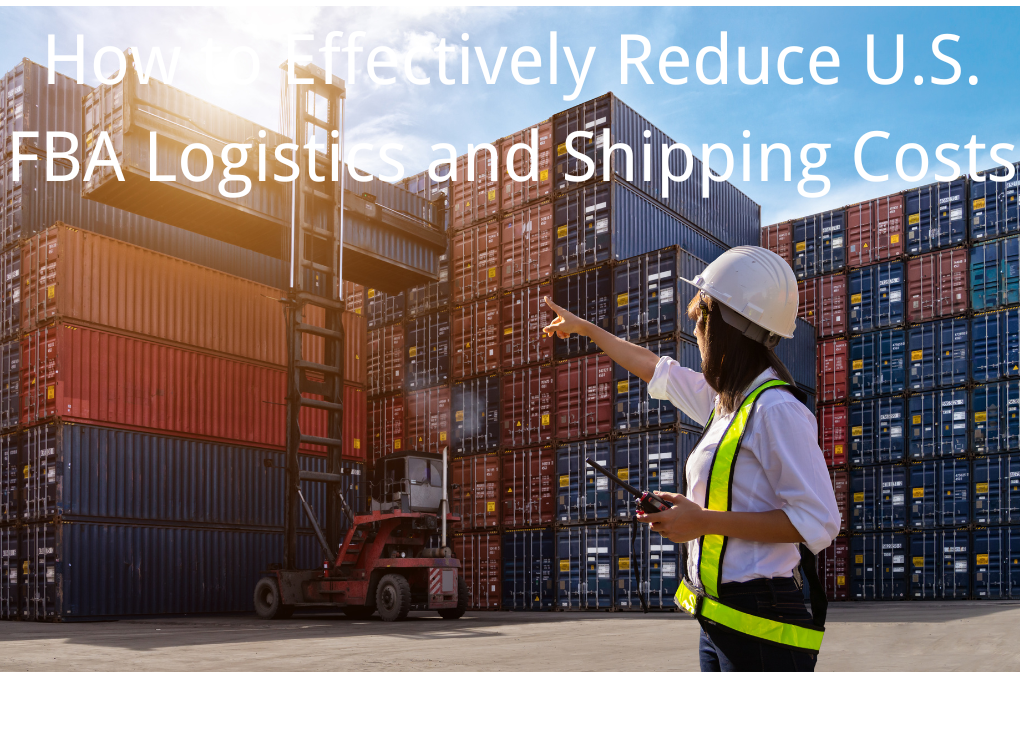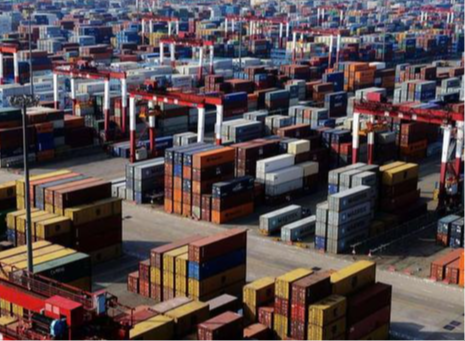FBA LCL Quote
FBA 40HQ FCL Quote
"Overseas warehouses are the product of cross-border e-commerce. More and more cross-border logistics have overseas warehouses. Overseas warehouses not only provide strong logistics support for cross-border sellers, but also provide certain conveniences for overseas buyers. Therefore, in the current logistics industry, the important role of overseas warehouses is becoming more and more prominent.
1. There are Three Types of Overseas Warehouse Models, Namely Third-party Overseas Warehouses, Amazon FBA Warehouses and Self-Operated Overseas Warehouses:
(1) Third-party Overseas Warehouses
The third-party overseas warehouse model refers to an overseas warehouse established and operated by a third-party enterprise (mostly logistics service providers), and can provide customs clearance, warehousing quality inspection, order acceptance, product sorting, delivery and other services for multiple cross-border e-commerce companies. Our overseas warehouses are The warehouse can also provide FBA return and exchange, transfer, re-printing or labeling, product testing, customs duty payment and other services. In other words, the third-party overseas warehouse model means that the entire cross-border logistics system is controlled by a third-party enterprise.
(2) Amazon FBA warehouse
FBA warehouse is a one-stop logistics service provided by Amazon, including warehousing, picking and packaging, delivery, collection, customer service and return processing. The logistics level of FBA warehouse is the benchmark in the overseas warehouse industry. The daily shipment volume, product variety and number of consumers of FBA warehouse far exceed those of third-party overseas warehouses. It is conceivable that FBA faces huge management difficulties. However, except for the high shipping cost and the trouble of return, FBA's logistics are almost impeccable for sellers.
(3) Self-operated overseas warehouses
At present, the service level of third-party overseas warehouses is still relatively basic and cannot meet the personalized needs of customers. Many e-commerce companies choose to build their own overseas warehouses. In addition, FBA is not perfect, so many cross-border merchants choose to build and operate their own overseas warehouses, which only provide warehousing, distribution and other services for their own products. In other words, the entire cross-border logistics process is controlled by the cross-border merchants themselves.
Although overseas warehouses can improve many problems in cross-border logistics, they are not perfect. Cross-border e-commerce logistics is in the choice.
2. Overseas Warehouses also Face the Following Challenges:
(1) High requirements for information technology
The core problem of overseas warehouse operations is the high requirements for information technology. Merchants place goods in overseas warehouses. When overseas customers place orders, they need to issue operation instructions remotely, and at the same time To implement and monitor inventory, it requires extremely advanced information technology. Auto Shipping Overseas Warehouse has an experienced professional operation team and its information technology is well protected.
(2) Requirements for the nature of goods
Merchants will store goods in batches in overseas warehouses in advance, which poses a certain inventory risk. This requires that the goods themselves are best-selling products with a high turnover rate, otherwise it may lead to warehouse explosion.
(3) Difficulties in multi-cultural management
The situation of overseas warehouses abroad is actually an "awkward" existence. For foreign countries, overseas warehouses should be regarded as a company with actual transactions, rather than a simple "warehouse", and they need to pay various taxes. In addition, the localization management of overseas warehouses also requires local operations and local employees. People who are consistent with local consumers in terms of language, culture, and beliefs need to participate in the marketing, management, and operation of the entire enterprise.
3. Why do We Need Overseas Warehouses?
For those cross-border e-commerce sellers who have not yet used overseas warehouses, there are some data from the platform that can tell us, such as the eBay platform. Overall, 40% of the transaction volume on the eBay platform already comes from overseas warehouses. This proportion may be higher on the Amazon platform, and may be lower on the AliExpress and Wish platforms. This is the trend. In the future, if many products want to go deep into the local area to do some work other than sales, to expand more business, or even to establish their own brands, they need to conduct local research.
Nearly 80% of sellers are very satisfied with the performance of overseas warehouses in helping them improve their accounts. At the same time, 80% of sales of many large sellers come from overseas warehouses or third-party overseas warehouses. So from the perspective of the entire market environment, overseas warehouses have become a standard.
The reason why overseas warehouses are chosen as the standard for their own logistics delivery is that they have been practiced and measured in terms of timeliness and cost.
4. How to Choose an Overseas Warehouse?
If your goods really enter the US market and start to do it, but the United States is so big, how to distribute your goods is a very interesting thing.
If you are doing overseas warehouses or using overseas warehouses now, most people will choose Los Angeles as their first overseas warehouse. Why? The distance is short, on the west coast of the United States, so the transportation distance is also short, the time is fast, and the cost is low. The key is that there are many local Chinese people, and there may be many friends. Many large and small sellers who build warehouses or third parties will choose Los Angeles as their first warehouse. It is known that the distance from the west coast to the east coast of the United States is more than 4,500 kilometers. The land area of the United States is only slightly smaller than that of China, and more than 200 million people are distributed in such a large country.
From the perspective of the entire population distribution of the United States, the population density in the western California and eastern regions, as well as the southern Florida region, and the Great Lakes, Michigan, is very high. As we all know, the timeliness and cost of logistics are proportional to the distance. The longer the distance, the longer the timeliness and the higher the cost. So if your warehouse is only in Los Angeles, and you want to send to the densely populated eastern regions such as New York, Chicago or Florida, how can you control your timeliness and delivery costs? Based on these situations, we built a warehouse in the east in 2015, and built another warehouse in southern Texas at the end of last year.
Auto Shipping continues to set the standard for reliability and innovation in freight forwarding, ensuring that we not only meet but exceed the expectations of our valued customers.

5. How to do a Good Job in Overseas Warehouses?
First, multiple warehouses in one country, reducing costs and speeding up delivery
In terms of cost, we used the data of outbound delivery in 2016 to make a calculation, that is, these orders are sent to the West Coast of the United States or distributed to the West Coast and East Coast, or distributed to three warehouses, that is, according to the division just now, they are sent in a combined place. In terms of cost, we can see that the dark orange line at the top is sent alone, the yellow is sent from the East Coast warehouse alone, and the green is sent from the most advantageous warehouses of the West Coast warehouse and the East Coast warehouse. It can be seen that the overall cost reduction can reach nearly 30%, that is, using the optimal delivery range of two warehouses to deliver orders can also reduce the proportion of costs. The three warehouses can further increase by two points.
Second, develop large and heavy goods and expand blue ocean categories
In terms of categories, we can see that more and more cross-border e-commerce companies are doing large and heavy goods. The entire market competition is very fierce. In terms of the entire category, if you have a good source of goods, the pressure of competition on the platform will still be much smaller. For example, furniture such as sofas, tables and chairs, lockers, generators, lawn mowers, and the engraving machine we just saw, all products of 15 kg, 30 kg or even heavier weight and larger volume need to have more suitable delivery methods. For example, DHL in the United States, delivery services in the United Kingdom, UPS services, or Toll services in Australia can all support the delivery of large products. In other words, we can further expand the product category through the last-mile service of large products. Third, use value-added services to enhance local advantages
As we all know, overseas warehouses also receive some push services, etc. In fact, using value-added services well can give your buyers and customers a better shopping experience. "



